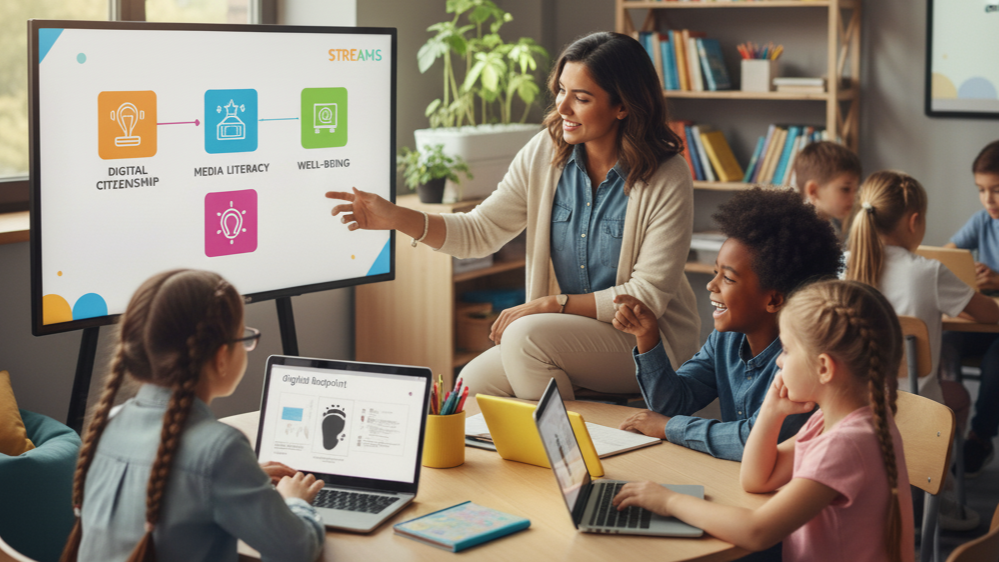
As educators, we know that the real magic of teaching happens when every single child walks into our classroom and genuinely feels, “I belong here.” It’s not just about academics; it’s about the whole child. This idea of fostering a true sense of belonging is deeply linked to the kind of holistic, multidisciplinary approach that educational solutions like FUNecole® champion.
A classroom where every student belongs is not just inclusive—it’s a place where social and emotional development is woven seamlessly into the academic fabric. It’s about creating an environment where a student’s emotional safety is the foundation for their intellectual risk-taking.
Why Belonging is a Multidisciplinary Imperative
When we look at building community through a holistic lens, like the one FUNecole® uses with its STREAMS approach (Science, Technology, Reading & Writing, Engineering, Arts, Math, and Social Sciences), we immediately see that “belonging” isn’t a separate lesson; it’s the glue that holds all the subjects together.
Social-Emotional Learning (SEL) is the Heart: The core of belonging is SEL. Students need to develop self-awareness, self-management, relationship skills, and responsible decision-making. When SEL is integrated across the curriculum—not just taught in isolation—it models to students that their feelings and social interactions matter as much as their test scores. Just like in the FUNecole® philosophy, compassion and emotional safety in the classroom are the keys to unlocking genuine inclusion and deeper learning.
Digital Citizenship and Identity: In today’s world, belonging extends online. Digital literacy is about more than just using a computer; it’s about being an ethical, informed digital citizen. When we teach students to manage their digital identity responsibly and engage in respectful online behavior, we are protecting their sense of belonging both in and out of the physical classroom. This interdisciplinary link between IT, ethics, and social studies is vital.
The Arts, Global Perspectives, and Expression: How can a student feel they belong if they never see their life, culture, or way of thinking reflected in the curriculum? A multidisciplinary approach values a student’s identity as an asset. Using Art and Design for self-expression, and incorporating Global Perspectives through themed projects, we create opportunities for every student to share their unique narrative and see themselves represented, celebrating diversity rather than forcing assimilation.
Practical Strategies for a Holistic Classroom Community
As teachers, we are always looking for tangible ways to make this philosophy a reality. Here are a few ways to embed a culture of belonging, drawing inspiration from a holistic, project-based model:
1. Build Community Agreements, Not Just Rules
Instead of simply posting a list of rules, collaborate with students to create Class Agreements on how they want to be treated and how they will treat one another. This fosters agency and shared power, which are fundamental to inclusion.
Teacher Tip: Use this as a cross-curricular opportunity. Have students write a “Class Community Pledge” (Literacy), or design a visual representation of their values (Art/Design).
2. Embrace Project-Based Identity Building
Students thrive when they can connect learning to their own lives and passions. Empowering student identity building through project-based learning (PBL) allows students to explore topics they care about (their heritage, a unique hobby, a family experience) while developing core 21st-century skills like critical thinking and problem-solving.
Teacher Tip: Start with a “Genius Hour” or “Passion Project” where the only requirement is that it must connect to a real-life problem they care about. The cross-subject skills, from research (Reading/Writing) to practical application (Engineering/Tech), become a scaffold for self-discovery.
3. Make Differentiation Invisible: Universal Design
Belonging means modifying the environment to fit the student, not the student to fit the environment. This is where Universal Design for Learning (UDL) principles come into play. A truly inclusive classroom ensures that activities, materials, and assessments are accessible to all learners from the start. Solutions that offer personalized learning experiences and diverse elements like videos, games, and formative assessments naturally support this.
School Leader Tip: Support teachers by providing access to teacher-ready solutions and ongoing professional development that cuts down on preparation time (like the 75% time-saving promised by FUNecole®). When planning time is efficient, teachers have more capacity to be the compassionate, observant mentors their students need.
The ultimate goal of education is to prepare our students to be versatile, flexible, and ethical expert thinkers who can solve real-world problems. They cannot do this if they are anxious, feel unseen, or are afraid to take intellectual risks. By adopting a holistic, multidisciplinary approach to education, we move beyond just teaching subjects and commit to developing the whole child.
Let’s focus on fostering the compassionate, supportive classroom where every child knows their voice is valued, their unique strengths are celebrated, and they absolutely, unequivocally belong. That’s how we truly shape the leaders of tomorrow.